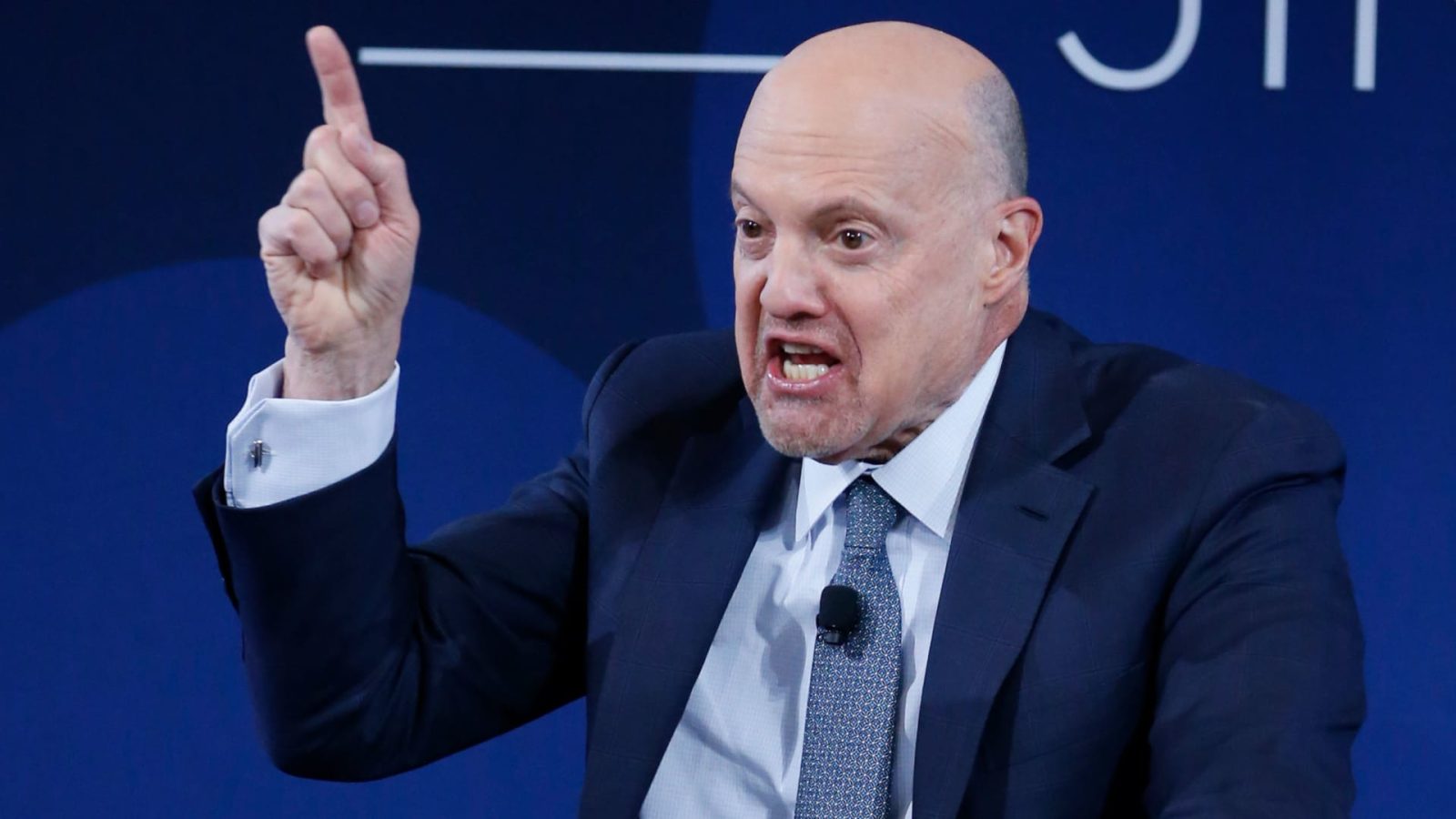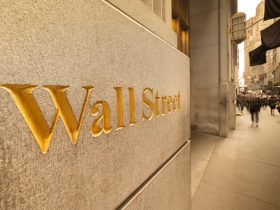There are a lot of reasons to be negative now, Jim Cramer listed many of them in his recent Top 10 things to watch in the market notes. But does that mean we should be negative? That’s the key question all investors need to be asking themselves as the 10-year Treasury yield reaches 16-year highs. Jim called it, “The tyranny of the 10-year,” because soaring yields tend to really whack high-profile growth stocks as we’ve seen in tech this week. It’s debatable whether Club name Apple (AAPL) should be viewed as a growth stock or a value stock (or maybe both — since growth and value are tied at the hip), but against the relentless rise of yields analysts at KeyBanc this week threw in the towel and downgraded its rating on Apple to sector weight from overweight (hold from buy). As a reason for this move, the analysts said that Apple is trading near all-time high multiples. In our view, these reasons for negativity are more so reasons for cautious optimism. One of, if not the golden rule for long-term investors, in the words of Warren Buffett is: “Be fearful when others are greedy, and be greedy when others are fearful.” There are many versions of that saying, as Baron Rothschild put it: “Buy when there’s blood in the streets, even if the blood is your own.” Of course, Jim has also told investors and viewers countless times: “Bulls and bears make money, hogs get slaughtered.” When you think about it, he too is saying don’t buy into greed, or sell into fear — after all a hog can be a bull turned into pig, greedy on the long side, or a bear turned pig, greedy on the short side. So, if that’s one of the rules almost all great investors agree on as the key to making money over the long term. The question is: Have we reached an adequate level of fear to be looking for opportunities? Consider what we’re facing. The 10-year Treasury yield, while taking a breather Wednesday, shot up this week to 4.8%, its highest level since 2007. These levels make investors nervous about paying higher stock prices for the same, or even lower, earnings because higher yields due to higher interest rates make the cost of borrowing to fuel growth more expensive. The recent spike in yields has come on top of a stock market already on edge since the Federal Reserve paused rate hikes at its September meeting but implied a higher-for-longer trajectory due to sticky inflation. It’s no wonder that the S & P Short Range Oscillator has been nearing a very oversold signal for the stock market. (At least for this one, as our discipline mandates, our path is clear: take advantage of the oversold market by putting some of our cash to work in shares of best-of-breed companies that are profitable with great management teams.) Days after temporarily avoiding a government shutdown this weekend, the GOP majority in the House of Representatives booted their speaker for the first time in history. Rep. Kevin McCarthy was removed in a Tuesday vote brought by hard-right conservatives who were angry that the California Republican worked with Democrats to keep the government open until mid-November to give both sides to work out their differences of spending levels. Moody’s, the only major credit rating agency to still give the U.S. a top AAA rating, has gone on record as warning that a government shutdown could harm America’s elite credit status and the U.S. dollar, which has been recently strong compared to foreign currencies as often is the case when a nation is hiking interest rates and the global economic environment is uncertain. How concerned all of that should make us depends on the valuation of the company in question. Being that it appears the Fed wants to get things back to 2019 levels, let’s look at valuations in mega-cap tech over the past four years, which is a timeframe that gets right back to just before anyone had even heard of Covid. On an absolute basis, Club names Amazon (AMZN), Nvidia (NVDA), Alphabet (GOOGL) and Meta Platforms (META) are all below where they were trading back then, based on forward earnings estimates, prior to the pandemic. Apple and fellow Club holding Microsoft (MSFT) are above where they were prior to Covid but not trading anywhere outside the norm of where they’ve been over the past four years. Remember, Apple in particular saw its stock price close at a record high in July. It has dropped more than 10% since then. Mega cap valuations Based on absolute valuations, just their individual price-to-earnings multiples, we don’t see any reason to be overly concerned about the downside in stock prices. Yes, the 10-year Treasury yield is higher than it had been at any point since 2019 – and it’s certainly the key metric to watch as it’s driving the price action. However, rates fluctuate. if the ultimate path of inflation is lower, and we think it is, then we have to question whether now is really the time to start selling stocks based on the 10-year yield. It may not be the time to back up the truck and rush in to buy as much as you can. However, we don’t think it’s suddenly the time to get more bearish either. Rather, this is the time to have your watchlist ready, pick your spots and opportunistically get some cash to work, as we have been doing for Jim’s Charitable Trust, the portfolio we use for the CNBC Investing Club. In fact, the rising cost of capital along with unionization efforts and the third quarter’s more than 28% rebound in oil (crude prices are getting slammed this week) may actually make these companies more valuable because they lead the charge on artificial intelligence, which plays directly into the automation efforts being pursued by management teams in an attempt to protect profits. We are not arguing that 10-year Treasury yields at these levels are a good thing. But we are saying that there are notable tailwinds for all of these companies assuming the Fed can avoid a hard landing for the economy, a recession scenario. As for the reason to think that bad could be good for the mega caps, we spoke to this in our recent alert about the ongoing UAW strike, noting that the more companies pay for labor the greater the incentive to invest in automation efforts as robots and automated factories require only the upfront investment and ongoing maintenance costs. The same can be said for any increase in operating costs as AI and automation are proven ways to enhance productivity and/or reduce costs. We get a similar picture of the investing environment when we consider the valuation of these tech names compared to the valuation of the S & P 500 , using the next 12-months earnings estimates. Mega cap valuations vs. S & P 500 Meta, Alphabet and Amazon are all cheaper now than they were relative to the S & P 500 versus 2019 levels. Nvidia is more or less right where it was, as is Microsoft, while Apple is currently more expensive than it was then. That doesn’t mean that we’re selling anything trading above where it was in 2019. We have to consider that unlike in 2019, there is a very real and very large AI opportunity for all of these companies. Nvidia has reached an inflection point, with CEO Jensen Huang discussing the need to revamp the world’s data centers – meaning that Nvidia stands to see coming its way hundreds of billions of dollars in company capital expenditures that had been targeting central processing units (CPUs) shift to now target graphic processing units (GPUs), of which Nvidia is the go-to chipmaker. Alphabet, Amazon and Microsoft are working to enhance their cloud services with artificial intelligence offerings. Meta Platforms is fast proving that it’s a leader in AI as it works to bolster its social media platforms while continuing to invest in virtual/mixed reality headsets for a slice of the hardware in the next era of computing. Apple is working on its own generative AI offering while it works to establish the gold standard of “spatial computing” with the upcoming Vision Pro mixed reality headset. It’s also important to remember that valuations come down in one of two ways: (1) stock prices come down or (2) earnings grow. In our view, there is a clear path for all of these companies to grow earnings over time, and none of them is currently being valued at levels that we view as overly concerning. Yes, their stock prices may come down a bit near-term, that’s always a possibility, but we have more confidence in them ultimately going much higher over the long term than we do in being able to sell now and hop back in a few percentage points lower. Jim has always said that trying to time the markets is a suckers’ game. So, ask yourself two questions: (1) do we have significant risk to the downside and/or (2) if you zoom out and take a longer-term view, beyond the end of this year, does it make sense to get out of these stocks now? In our view the answers to both are no. Some downside? Maybe. But a case for the names to see anything more than a normal run-of-the-mill correction? Not really (unless the economic backdrop were to deteriorate rapidly from here). And don’t forget how many correction calls get made versus bonified corrections that actually end up taking place. Bottom line In the end, there are good reasons to sell shares — to right-size a position that’s gotten too big, to raise cash to replenish buying power down the road, or when the facts have changed and the investment thesis is no longer intact. However, if the only motivation for selling is to re-buy 5% lower, the risk usually isn’t worth the reward. You may nail that move once or twice. But the odds of pulling off the perfect trade by correctly timing the exit and reentrance are sub-optimal, to say the least. Over the long run, we would bet that for most people, more money will be left on the table than actually won trying to hop in and out of the stocks of great companies, especially when the valuations aren’t all that demanding versus where they’ve been historically. The 10-year Treasury yield is certainly a reason to approach the market with caution, but the valuations we have at these levels, along with the tailwinds we see over the next 12 months for all of these names are reasons for optimism. (Jim Cramer’s Charitable Trust is long AAPL, AMZN, NVDA, META, GOOGL, MSFT. See here for a full list of the stocks.) As a subscriber to the CNBC Investing Club with Jim Cramer, you will receive a trade alert before Jim makes a trade. Jim waits 45 minutes after sending a trade alert before buying or selling a stock in his charitable trust’s portfolio. If Jim has talked about a stock on CNBC TV, he waits 72 hours after issuing the trade alert before executing the trade. THE ABOVE INVESTING CLUB INFORMATION IS SUBJECT TO OUR TERMS AND CONDITIONS AND PRIVACY POLICY , TOGETHER WITH OUR DISCLAIMER . NO FIDUCIARY OBLIGATION OR DUTY EXISTS, OR IS CREATED, BY VIRTUE OF YOUR RECEIPT OF ANY INFORMATION PROVIDED IN CONNECTION WITH THE INVESTING CLUB. NO SPECIFIC OUTCOME OR PROFIT IS GUARANTEED.
Read the full article here











Leave a Reply